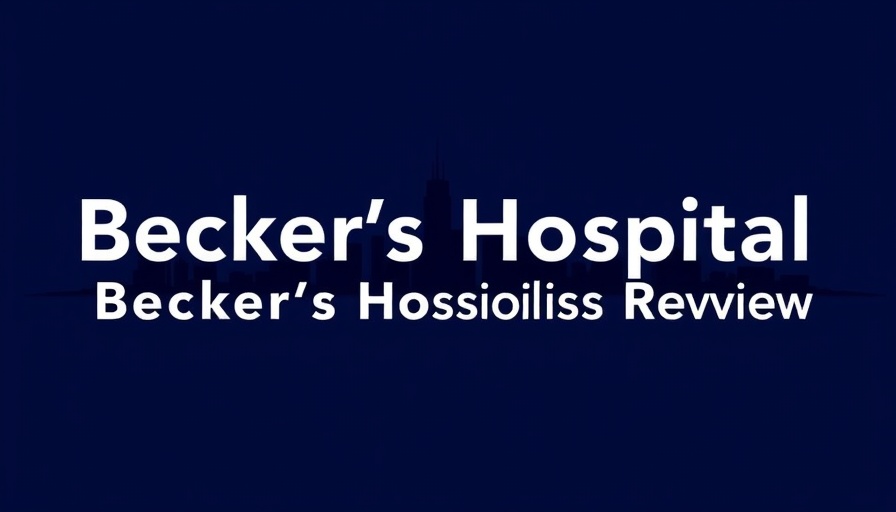
The Future of Healthcare: Crafting the 2030 Vision
In a timely and strategic move, Providence Health System, based in Renton, Washington, has unveiled its ambitious 2030 strategy under the leadership of President and CEO Erik Wexler. This vision sets out to navigate the 'perfect storm' facing the healthcare industry, which includes challenges like potential Medicare and Medicaid cuts, increasing labor costs, and heightened inflation. In response to these pressures, Providence has already initiated significant cost-saving measures, including a hiring freeze and workforce reductions, demonstrating its commitment to financial sustainability.
Understanding the 'Perfect Storm' in Healthcare
Today, healthcare systems across the nation are grappling with obstacles that threaten their operational viability. As Wexler highlighted, ongoing denials and delayed payments from insurers, coupled with the looming threat of federal cuts, create a precarious environment for providers. For independent healthcare practitioners and clinics, this backdrop underscores the importance of innovation and adaptable business strategies. By investing in practice automation and patient engagement tools, smaller practices can also mitigate risks associated with evolving financial landscapes.
A Closer Look at Providence's Three Strategic Pillars
Wexler's roadmap revolves around three key pillars aimed at transforming healthcare delivery over the next five years:
- Be the Best Place to Give and Receive Care: This pillar emphasizes synchronized clinical pathways, reducing wait times, and increasing access. Through tools like self-scheduling and real-time patient feedback, Providence is investing in streamlined care pathways that could potentially benefit independent practices as well.
- Create the Delivery Model of the Future: By expanding operations into virtual and home care settings, Providence is paving the way for a model that nurtures value-based care. This could inspire telehealth revenue expansions for family practice doctors and care providers aiming to reach patients in innovative ways.
- Drive Focused Innovation for Positive Change: The integration of AI-enabled tools, such as ambient scribing technology, represents a significant leap forward in reducing administrative burdens in healthcare settings. For independent providers, adapting similar technologies fosters improved operational efficiency and medical billing recovery, ensuring greater profitability.
Implications for Independent Medical Practices
The implications of Providence's strategy extend beyond large health systems. Independent practices, rural health clinics, and community pharmacies can adopt similar approaches to bolster their resilience against financial uncertainties. For instance, practices focused on employee health benefits and medical staff retention will find that aligning with value-based care models enhances patient engagement and contributes positively to their bottom line.
Future Trends and Opportunities in Healthcare Delivery
As healthcare continues to evolve, several trends present pronounced opportunities for independent practitioners:
- Remote Therapeutic Monitoring (RTM) Programs: The future will likely see increased adoption of RTM programs, enabling practices to monitor patients from the comfort of their homes, ultimately optimizing patient care and practice revenue.
- AI Integration in Daily Operations: Utilizing AI phone agents and other HIPAA-compliant automation technologies can create significant efficiencies while ensuring compliance and security.
- Collaboration Across Health Systems: As Providence aims for strategic partnerships, independent practices should also consider alliances that enhance service offerings and expand patient reach.
Final Thoughts: Embracing Change for a Thriving Future
The roadmap outlined by Providence serves as a significant blueprint for healthcare providers. Adapting similar strategies can empower independent practitioners to thrive amidst challenges. As healthcare professionals, it’s essential to remain proactive in exploring healthcare business tools that support clinic cost savings and enhance patient care.
For anyone involved in healthcare delivery, this is an invitation to reflect on your organization's direction. By honing in on practices that embrace automation and patient-centric models, you position yourself to not only survive these turbulent times but to thrive in the ever-changing landscape of healthcare.
 Add Row
Add Row  Add
Add 




Write A Comment